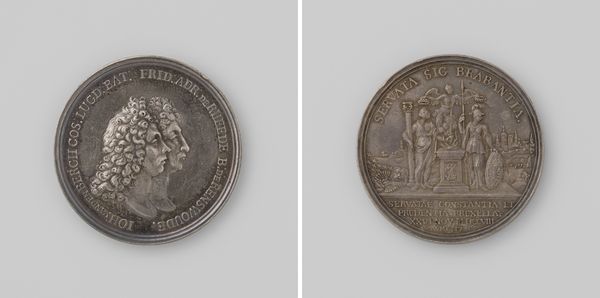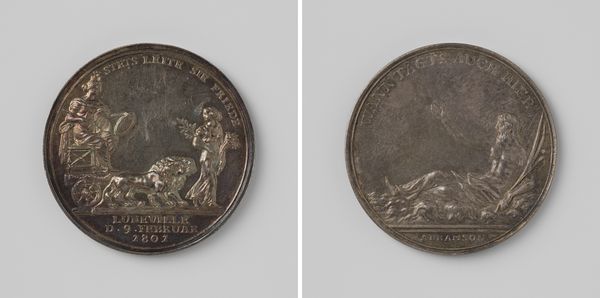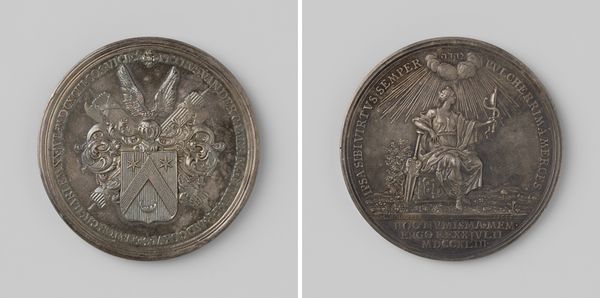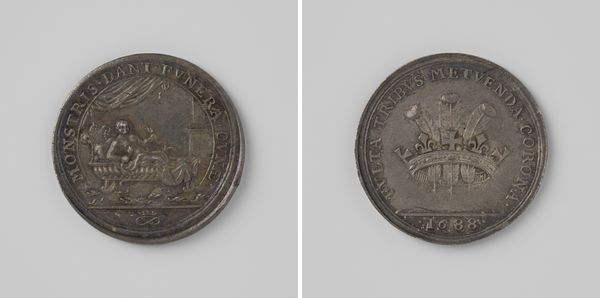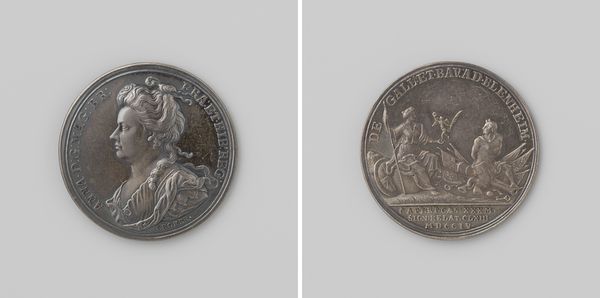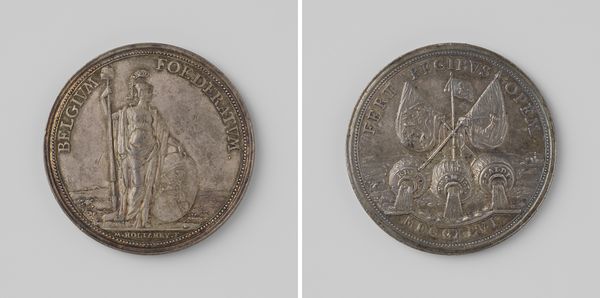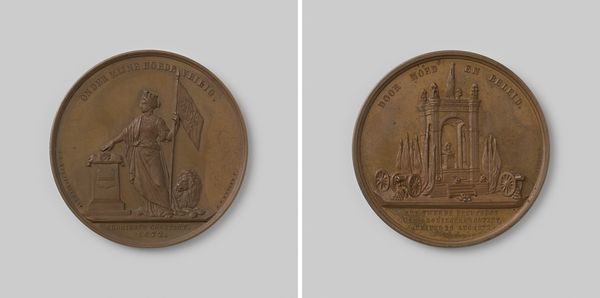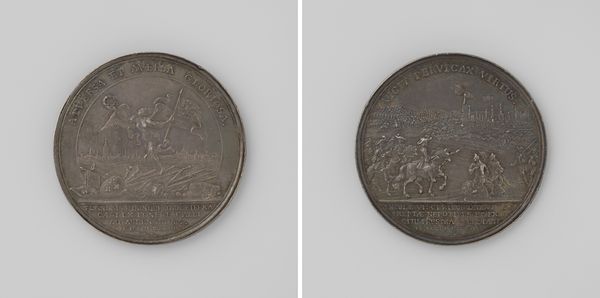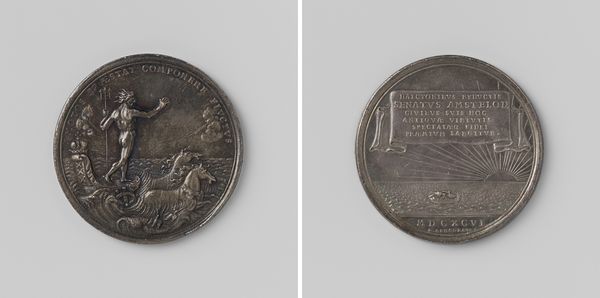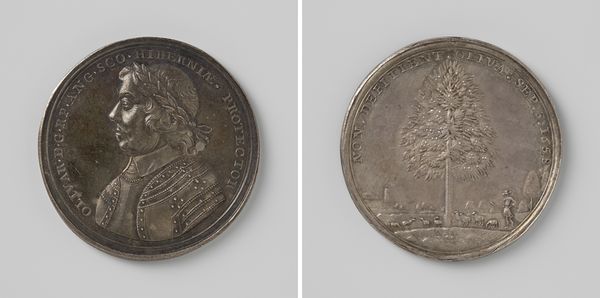
print, metal, relief, sculpture, engraving
#
portrait
#
neoclacissism
# print
#
metal
#
sculpture
#
relief
#
sculptural image
#
sculpture
#
history-painting
#
engraving
#
miniature
#
statue
Dimensions: diameter 2.7 cm, weight 6.31 gr
Copyright: Rijks Museum: Open Domain
Curator: This impressive medal, created in 1774, is titled "Tweehonderdste verjaardag van het ontzet van Leiden" and was designed by Theodorus Victor van Berckel. What strikes you first about its composition? Editor: Immediately, it's the stark contrast between the two sides—a duality. On one, a figure sits triumphantly; on the other, a lone figure seems to be imploring, gesturing toward a burning object. The neoclassical style gives it a certain gravitas, doesn't it? Curator: It does. Let’s consider the material and the processes involved. It's a metal print, likely an engraving, transforming base metals into a commemorative object. Who would have handled it? Who would have commissioned it? Editor: Right, the Neoclassical aesthetic speaks to the engraver's knowledge of antiquity. Note the careful drapery on both figures, rendered to highlight form and the clear allegorical symbols. The shield with keys—a detail, yes, but one of enormous civic pride. Curator: And those inscriptions in Latin, reminding viewers about higher values—the defense "pro nobis veritas," for truth—but then think of the craftsman at work: the precise labor needed to create the relief… Who owned it then, and how might they show and share it? Editor: Indeed. Considering the visual rhythm, the sunburst on the 'truth' side mimics the light above the altar. Van Berckel used that visual echoing to create an elegant aesthetic bridge between the themes of defense and celebration. Curator: This work prompts fascinating inquiries. How was commemorative metalwork marketed? Were they individually made? Considering the scale and historical moment, this medal opens a broader conversation about craft economies and their relationship to power and patronage in late eighteenth century. Editor: It definitely prompts one to study the delicate dance between historical commemoration and artistic form. And on a simple circle too! The refinement with a purpose. Curator: Exactly.
Comments
No comments
Be the first to comment and join the conversation on the ultimate creative platform.

